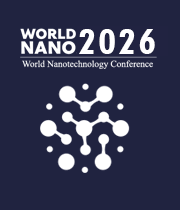Nanoelectronics Materials
Nanoelectronics materials are a class of materials that are used in the production of nanoelectronic devices such as transistors, diodes, and field effect transistors. Nanoelectronics materials have some unique features that make them attractive for use in nanoelectronics. The most common nanoelectronics materials include carbon nanotubes, graphene, and nanowires. Carbon nanotubes are one of the most widely used nanoelectronics materials. These materials are composed of tiny tubes of carbon atoms that are arranged in a hexagonal lattice. Carbon nanotubes are highly conductive and can be used to create transistors and logic gates. They are also resistant to corrosion and can be used to create electrical pathways for signals. Graphene is another popular nanoelectronics material. Graphene is a two-dimensional material composed of a single layer of carbon atoms. Graphene has excellent electrical and thermal conductivity, making it well-suited for use in transistors and other components. It also has excellent mechanical properties, which make it an ideal material for creating thin, flexible nanoelectronic devices.

Harry Ruda
University of Toronto, Canada
Raman Singh
Monash University, Australia
Paulo Cesar De Morais
Catholic University of Brasilia, Brazil
Xiao Hong Nancy Xu
Old Dominion University, United States
S V A R Sastry
Harcourt Butler Technical University, India
Vinayak Adimule
Angadi Institute of Technology and Management, India



Title : Nanomaterial-based bio-lubricant additives for improved efficiency and environmental sustainability in automotive applications
S V A R Sastry, Harcourt Butler Technical University, India
Title : Harnessing the unique properties of engineered nanostructures for sensing
Harry Ruda, University of Toronto, Canada
Title : Circumventing challenges in developing CVD graphene on steels for extraordinary and durable corrosion resistance
Raman Singh, Monash University, Australia
Title : 40,000 implants in humans and no failure: The impact of nanomedicine
Thomas J Webster, Hebei University of Technology, China
Title : Evaluating cytotoxicity of metal-doped tin oxide nanoparticles
Paulo Cesar De Morais, Catholic University of Brasilia, Brazil
Title : Lipid nanoparticles formulations: From bench scale to industrial scale
Mohammad A Obeid, RAK Medical and Health Sciences University, United Arab Emirates